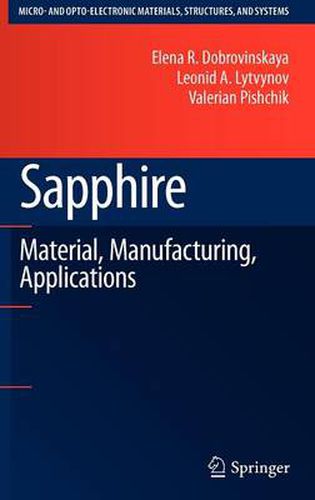Readings Newsletter
Become a Readings Member to make your shopping experience even easier.
Sign in or sign up for free!
You’re not far away from qualifying for FREE standard shipping within Australia
You’ve qualified for FREE standard shipping within Australia
The cart is loading…






This title is printed to order. This book may have been self-published. If so, we cannot guarantee the quality of the content. In the main most books will have gone through the editing process however some may not. We therefore suggest that you be aware of this before ordering this book. If in doubt check either the author or publisher’s details as we are unable to accept any returns unless they are faulty. Please contact us if you have any questions.
By the second half of the twentieth century, a new branch of materials science had come into being - crystalline materials research. Its appearance is linked to the emergence of advanced technologies primarily based on single crystals (bulk crystals and films). At the turn of the last century, the impending onset of the ceramic era was forecasted. It was believed that ceramics would play a role comparable to that of the Stone or Bronze Ages in the history of civilization. Naturally, such an assumption was hypothetical, but it showed that ceramic materials had evoked keen interest among researchers. Although sapphire traditionally has been considered a gem, it has developed into a material typical of the ceramic era. Widening the field of sapphire application necessitated essential improvement of its homogeneity and working characteristics and extension of the range of sapphire products, especially those with stipulated properties including a preset structural defect distribution. In the early 1980s, successful attainment of crystals with predetermined char- teristics was attributed to proper choice of the growth method. At present, in view of the fact that the requirements for crystalline products have become more str- gent, such an approach tends to be insufficient. It is clear that one must take into account the physical-chemical processes that take place during the formation of the real crystal structure, i.e., the growth mechanisms and the nature and causes of crystal imperfections.
$9.00 standard shipping within Australia
FREE standard shipping within Australia for orders over $100.00
Express & International shipping calculated at checkout
This title is printed to order. This book may have been self-published. If so, we cannot guarantee the quality of the content. In the main most books will have gone through the editing process however some may not. We therefore suggest that you be aware of this before ordering this book. If in doubt check either the author or publisher’s details as we are unable to accept any returns unless they are faulty. Please contact us if you have any questions.
By the second half of the twentieth century, a new branch of materials science had come into being - crystalline materials research. Its appearance is linked to the emergence of advanced technologies primarily based on single crystals (bulk crystals and films). At the turn of the last century, the impending onset of the ceramic era was forecasted. It was believed that ceramics would play a role comparable to that of the Stone or Bronze Ages in the history of civilization. Naturally, such an assumption was hypothetical, but it showed that ceramic materials had evoked keen interest among researchers. Although sapphire traditionally has been considered a gem, it has developed into a material typical of the ceramic era. Widening the field of sapphire application necessitated essential improvement of its homogeneity and working characteristics and extension of the range of sapphire products, especially those with stipulated properties including a preset structural defect distribution. In the early 1980s, successful attainment of crystals with predetermined char- teristics was attributed to proper choice of the growth method. At present, in view of the fact that the requirements for crystalline products have become more str- gent, such an approach tends to be insufficient. It is clear that one must take into account the physical-chemical processes that take place during the formation of the real crystal structure, i.e., the growth mechanisms and the nature and causes of crystal imperfections.